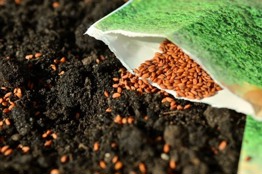Shemitah, Introduction#3 - Instructions to the Reader

Introduction to the English version of the book hilchot shemitah.
Note on the English Edition
The guide before you is a translation of the sixth edition of the Hebrew-language guide (for the shemitah year of 5782, 2021–1), based on previous guides from the shemitah years of 5747 (1986–7), 5754 (1993–4), 5761 (2000–1), 5768 (2007–8), 5775 (2014–5).
This is the first year that we translated this guide into English for the benefit of the large English-speaking population living in Israel interested in observing the shemitah-related laws in the most mehudar fashion, who prefer to read the guidelines in their native language.
In the English edition we made minor changes in several places, primarily in the footnotes, for clarity's sake. Note that there are another two guides available in Hebrew: Guide for Gardens (hamadrich legan hanoy) and a Farmer's Guide (hamadrich lachaklay).
In this guide we attempt to present the practical halachic rulings in a brief and clear fashion, as much as possible. In the footnotes, where refer to the basic disputes and various opinions, and explain the rationale behind the rulings we cite for each subject. It is superfluous to note that there are many disputes on the laws of shemitah (as there are in many other halachic matters). This is why in other books on shemitah, the guidelines may be somewhat different than the ones that appear here—sometimes they more stringent and sometimes more lenient. In the footnotes, we also attempt to cite opinions that differ from our rulings, so that if readers encounter such opinions elsewhere, they will understand the context and the point of contention. Furthermore, in extenuating and bedi'avad circumstances, readers will be aware of other more lenient opinions, and will be able ask their rabbi if it is possible to follow one of the lenient opinions, or if nevertheless they should adopt the stringent opinion.
On references: all references to Rambam, Chazon Ish, and other Rishonim and Acharonim are to their works on shemitah (Hilchot Shemitah, Shevi'it, and some on Seder Zera'im), unless specifically noted otherwise. References to Hilchot Shevi'it refer to the work by Rabbi Binyamin Zilber (there are multiple works by this name). Rabbi Kook refers to Rabbi Avraham Yitzchak HaKohen Kook, and not to his son Rabbi Tzvi Yehuda.
Throughout the guide, we make abundant reference to the book Shabbat Ha'aretz, published by Torah VeHa'aretz Institute, which explains and expounds on the book by Rabbi A.Y. Kook on the Rambam (Shabbat Ha'aretz). Its notes include many references to sources written by rabbis of the institute. Shabbat Ha'aretz can be accessed on the Jewish digital online library Otzar HaChochmah; readers can look there for more information on topics of interest.
Katif Shevi'it is another Torah VeHa'aretz Institute publication (5767), which includes extensive footnotes and explanations on the halachic rulings we bring here. In certain cases, we refer to this book is well.
Besides translating the Torah VeHa'aretz Institute's books into English, the English Department is involved in giving lectures and halachic-agricultural tours, answering questions on shemitah (and other topics related to land-dependent mitzvot), writing articles in English, and posting related materials on our English website.
I would like to thank Shoshan Raiz, our translator, for her dedicated work. I would also like to take this opportunity to thank my parents for reviewing the guide and giving their expert advice and critique. Last, I want to thank my wife for making it possible for me to dedicate my time to teaching about the land-dependent mitzvot. Without her support, this English-language guide would not have been published.
It is my hope and prayer that this guide raises awareness and helps readers properly observe the precious mitzvah of shemitah.
Rabbi Moshe Bloom
Head of English Department, translation advisor and editor.
Shevat 5781 (January 2021), sixth year of the shemitah cycle
Hebrew introduction
The goal of the Shemitah Consumer's Guide is to provide everyone with the tools to properly observe the laws and values of the shemitah year.
This guide is based on guides published by the Torah VeHa'aretz Institute since the shemitah year of 5747 (1986–7), under the guidance of the Israel's chief rabbis at that time—Rabbi Avraham Shapiro z"l and Rabbi Mordechai Eliahu z"l; Rabbi Shaul Yisraeli z"l, then chairman of the Shemitah Committee; and Rabbi Yaakov Ariel shlit"a.
These great rabbis paved the path for proper shemitah observance as it applies to all parts of our lives. Our Torah is a Torah of life, which accompanies our every step and is with us in everything we do. For this reason, it is necessary to update the shemitah guide every shemitah year.
We do our best to present readers the various approaches, the rationale for halachic decisions, and their ramifications. "May the favor of the L-rd our G-d, be upon us; let the work of our hands prosper, O prosper the work of our hands!" (Tehillim 90:17).
Sincerely,
Rabbi David Eigner
Nissan 5774 (March 2014)




